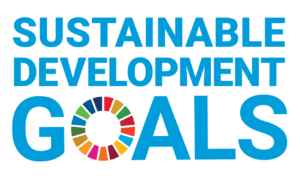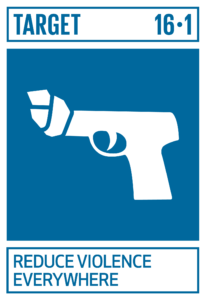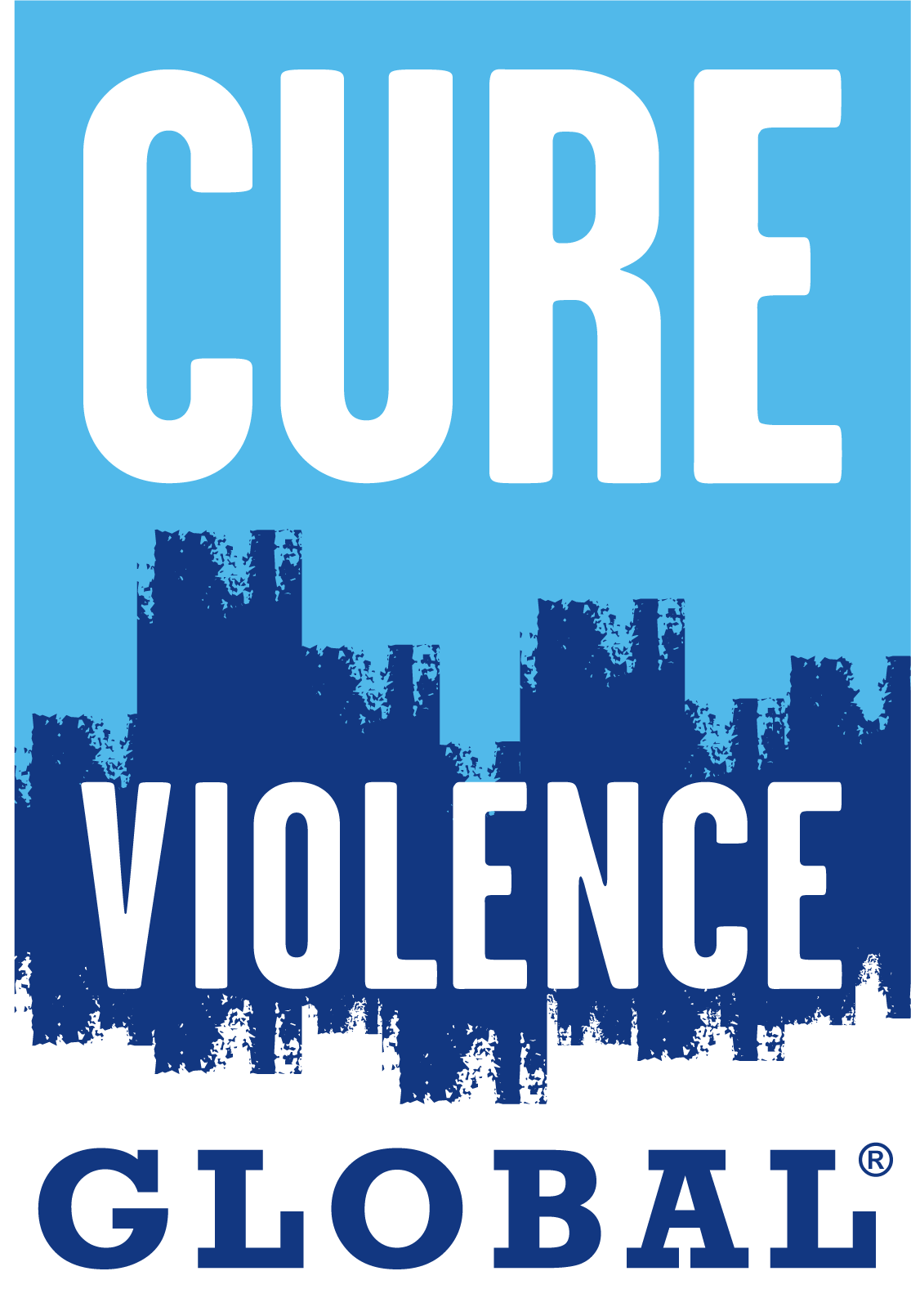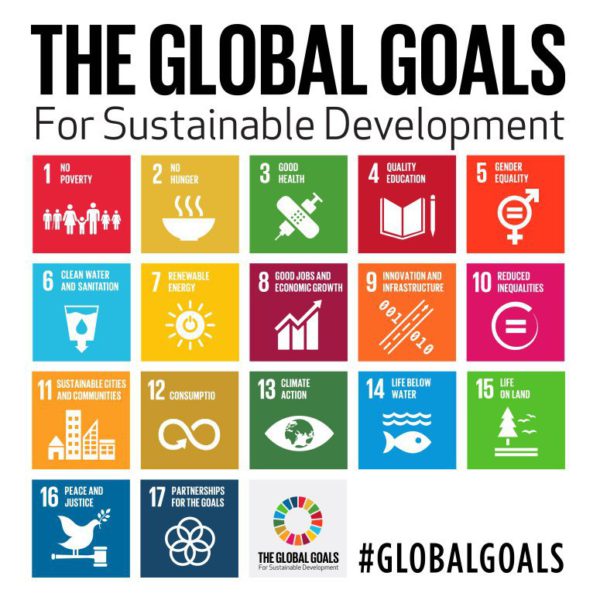By Chelsea Gupta and Quinn Sullivan
At the United Nations Climate Change Conference 2021 (COP26), which came to a close this past week, world leaders agreed to actualize their commitments to a number of targets for environmental sustainability. At CVG, we know that environmental sustainability and violence reduction are interconnected. The same ambition demonstrated at COP26 must be accelerated within all fields of sustainable development which strive to protect current and future lives. Just as climate change threatens human health and human life, so, too, does violence. Interpersonal and structural violence are serious impediments to economic and social development and must be addressed with the same urgency as climate change.
UN Sustainable Development Goals
 In September 2000, leaders from 189 countries gathered at the United Nations (UN) headquarters and signed the historic Millennium Declaration. Each signatory committed to achieving a set of eight measurable goals that ranged from halving extreme poverty and hunger to promoting gender equality and combating disease. Twelve years later, at the UN Conference on Sustainable Development (Rio+20), world leaders galvanized the process to develop a new set of Sustainable Development Goals (SDGs) which carried on the momentum generated by the Millenium Declaration.
In September 2000, leaders from 189 countries gathered at the United Nations (UN) headquarters and signed the historic Millennium Declaration. Each signatory committed to achieving a set of eight measurable goals that ranged from halving extreme poverty and hunger to promoting gender equality and combating disease. Twelve years later, at the UN Conference on Sustainable Development (Rio+20), world leaders galvanized the process to develop a new set of Sustainable Development Goals (SDGs) which carried on the momentum generated by the Millenium Declaration.
The SDGs were adopted by the UN in 2015 as a universal call to action to end poverty, protect the planet, and enhance peace and prosperity. The UN recognizes that ending poverty must go hand-in-hand with strategies that build economic growth and address a range of social needs including education, health, security, and job opportunities, in addition to tackling climate change.
The 17 SDGs are integrated—they recognize that action in one area will affect outcomes in others, and that development must balance social, economic, and environmental sustainability. To achieve the SDGs in every context, global partners must share their creativity, technology, and financial resources.
SDG 16.1: Reducing Violence
 SDG 16 focuses on “promoting peaceful and inclusive societies for sustainable development, providing access to justice for all and building effective, accountable and inclusive institutions at all levels.” Within SDG 16, the first target, 16.1, is the reduction of all forms of violence and related deaths everywhere. Advancing this goal is a fundamental component of Cure Violence’s work.
SDG 16 focuses on “promoting peaceful and inclusive societies for sustainable development, providing access to justice for all and building effective, accountable and inclusive institutions at all levels.” Within SDG 16, the first target, 16.1, is the reduction of all forms of violence and related deaths everywhere. Advancing this goal is a fundamental component of Cure Violence’s work.
Violence reduction is essential to the sustainable development of communities. We know that violence clusters in specific areas and that in these areas with the highest levels of violence, the violence itself is a barrier to development. When communities experience high rates of violence, efforts to develop their economies and social institutions are threatened by feelings of endangerment. SDG 16 promotes the right to live safely, free from the fear of violence.
Additional targets of the SDGs, such as poverty, health, hunger, gender issues, and others, are also interconnected with rates of violence. In fact, the presence of high levels of violence is itself an impediment to progress in these other areas. Therefore, in communities where violence is prevalent, violence reduction methods must be prioritized in order for these other SDG targets to be effectively addressed. Around the world, CVG partners (such as UNICEF) are committed to working together at these intersections. Our local, community-led partner organizations often collaborate with other stakeholders, building a network of coalitions that aim to eliminate violence in all its forms and strengthen community resilience.
Despite global efforts, levels of violence worldwide are consistently disturbing. At the current rate, “the world is not on target to achieve a significant reduction in all forms of violence.” Therefore, the targets of SDG 16 require more work. Fortunately, there are approaches that have proven effective at preventing and reducing violence in communities where it is heavily concentrated. CVG applies one of those approaches.
Cure Violence Global’s Approach
While violence has been present and persistent throughout human history, the world does not have to accept it as an inevitable part of the human condition. Instead, violence should be understood as a contagious behavior that can be prevented with a public health approach.
Cure Violence Global is guided by the evidence that violence is a health issue, that individuals and communities can transform themselves, and that strategic partnerships are key to successfully treating the epidemic of violence. Through a rigorous, scientific, and data-driven approach, Cure Violence functions as a community-based alternative to public safety.
CVG has applied its health-based violence reduction methods for over 20 years, adapting and replicating the model in over 15 countries. Through 20 studies, including eight independent evaluations, CVG has demonstrated the link between decreases in violence and increases in the wellbeing of communities with CVG programming. For example, CVG adapted its model to the context of community violence in three sites across the San Pedro Sula suburb of Chamelecon, Honduras. In the months between April and December of 2013, roughly 150 shooting incidents occurred in the area. Exactly one year later such incidents across the Chamelecon sites dropped by 80 percent, from 150 incidents to 30. In New York City, neighborhoods with CVG sites were associated with shifts in social norms, resulting in less support for violence when compared with similar neighborhoods without Cure Violence programs. The Cure Violence model works because it targets the communities with the highest rates of violence to interrupt the transmission and change community norms. Whether implemented in conflict zones, such as those in Syria, regions with high rates of community violence, such as Honduras, or United States cities plagued by gun violence, the model has repeatedly proven effective.
CVG’s work is directly aligned with SDG 16, furthering the target of 16.1 to reduce violence around the world. Additionally, CVG believes that preventing and reducing violence is critical to the successful implementation of all other SDGs. As such, in communities where violence is threatening the lives and livelihoods of so many, we hope that local governments and the UN will prioritize evidence-based violence prevention efforts, such as the Cure Violence health-based approach. These programs, together with complementary efforts addressing the systemic factors that contribute to conflict, will ensure that we have a greater chance of achieving our shared vision of a world free from violence.


